The Case
What is Whispr Groups digital election barometer?
Whispr Group’s analysis on digital advertising on Facebook, Instagram and Messenger for the Swedish election 2022 is Sweden’s largest survey of how the parties’ advertising impacted the election. With the help of our own AI-based platform, we now have the opportunity to analyze a large amount of data, something that was not possible before. This gave us a deeper insight into the parties’ digital advertising and strategies for the 2022 election.
The political parties invested more than SEK 66 million in political ads via social media leading up to the election in Sweden on September 11th 2022. Socialdemokraterna (S) invested the most, followed by Moderaterna (M) and Centerpartiet (C). Part of the budget was spent on attack ads, ads whose purpose is to smear the opponent, which increased from previous elections.
The Method
All data in our analysis is pulled from Meta’s Ad Library and analyzed via Whispr Group’s AI-powered insights platform.
- All ads from the parties’ municipal, regional and national accounts are imported.
- The ads are so-called “dark ads” that are published on Facebook, Instagram, Messenger and/or Audience Insights. “Dark ads” are ads that are visible only in the target groups to which the ads are directed – that is, not in the parties’ own social media feed.
- Whispr Group imports all data about Swedish political ads to our AI-driven insight platform where we compile and analyze the ads quantitatively (aggregated statistics on, among other things, number, reach, cost, demographics, topic).
The Analysis
Targeted political advertising has been widely debated in recent years and, among other things, led to opening up data about how organizations with connections to political issues advertise. Therefore, completely new data is available.
From January until the election in September, we answered the following questions through our analysis:
- How much money did political parties spend on digital advertising?
- What topics did they highlight in their digital ads?
- To which groups did they direct their various messages (age, gender, region)?
- How did the parties work with attack ads?
The Result
The parties have together spent SEK 66 million on digital ads since January this year. In the first 11 days of September alone, a total of just over SEK 13 million was spent, which was more than what was spent in any other month during the year apart from August this year. The data we have analyzed pointed to major differences between the parties’ campaign strategies.
“Social media has become an increasingly important channel for political advertising and can be seen as a kind of digital door knocking where the parties can talk to their voters undisturbed”,
– says Olof Granström, Senior Client Advisor at Whispr Group.
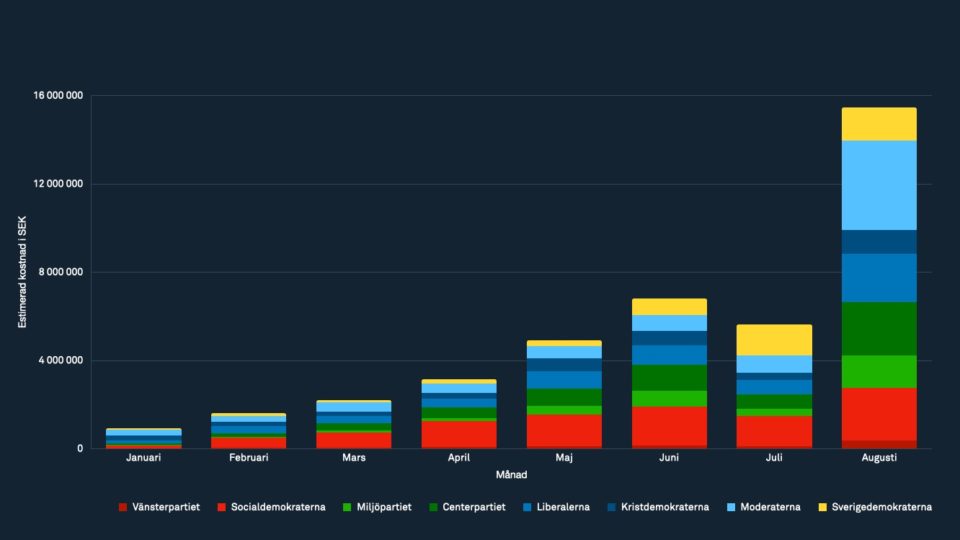
Topics
Law and order has been the subject that all parties together have spent the most on this year, continuing this way into September until the election day (total SEK 14.7 million in September). S spent SEK 4.3 million on the subject, followed by M on SEK 3.5 million. On matters relating to school and education, S also continues to dominate together with the Liberals (L). This topic, together with the topics of crime issues and prices on gas and electricity was the topics that the parties spent most money on.
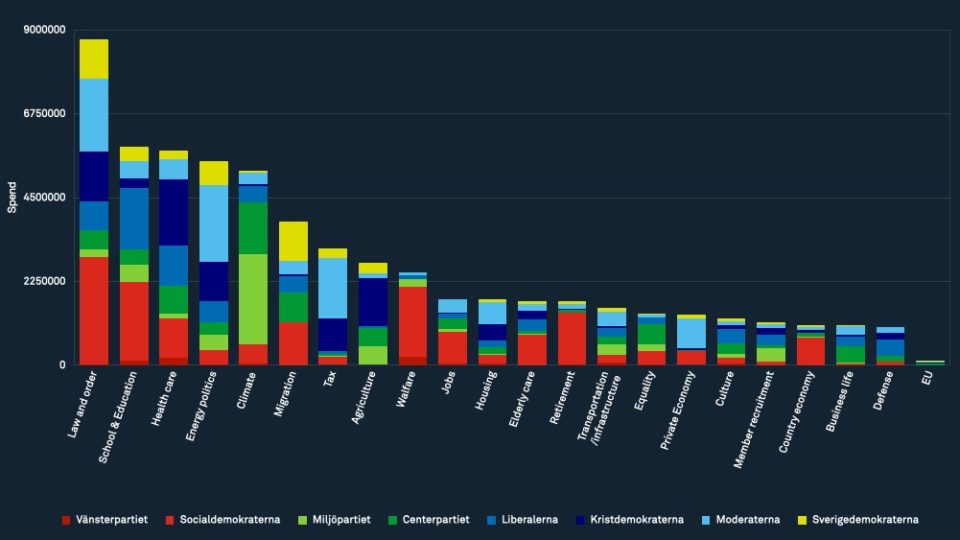
These are all topics that are prioritized for the male audience, whereas the more female topics such as healthcare, environment, and equality are topics that have not been prioritized in the ads.
We have studied more than 50 000 unique ads on Facebook and Instagram and analyzed the current hot topics that have been prioritized throughout the election. The war in Ukraine followed a couple of hot topics, one being energy. This was also a topic that most of the parties discussed in different ways in their ads, but none of the parties really dominated with ads related to this topic.
Demographics
The graph shows the primary target groups in terms of gender and age that the parties reached with their ads. This indicates which groups the parties targeted with their advertisements. The youngest age group (18-24 years) was reached to a lesser extent than the other age categories. The most important target group overall was women aged 25-34, which was prioritized by L, C and S. The other parties targeted older people in their advertising to a greater extent.
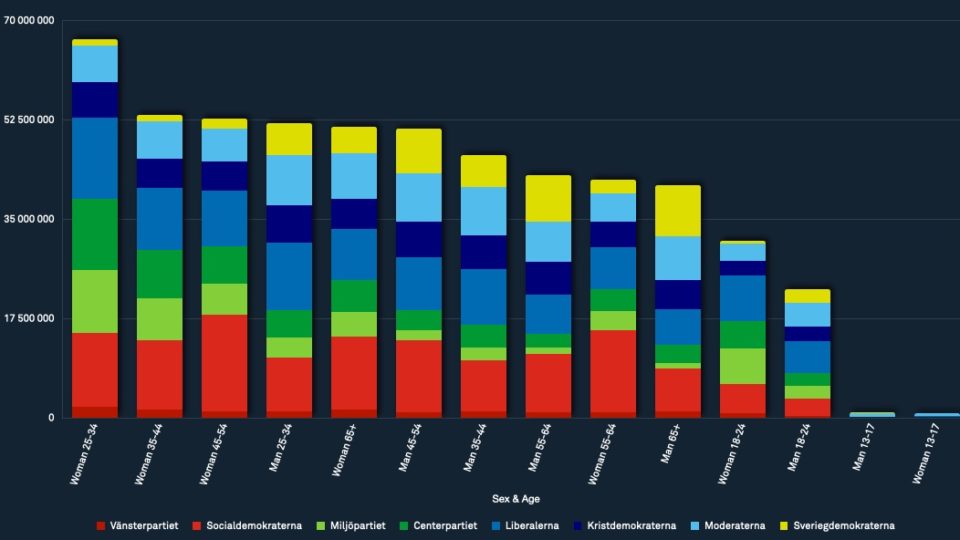
Stockholm remained an important area for all parties, closely followed by Västra Götaland and Skåne. This is where most people live and thus it was an important area for all parties ahead of the election.
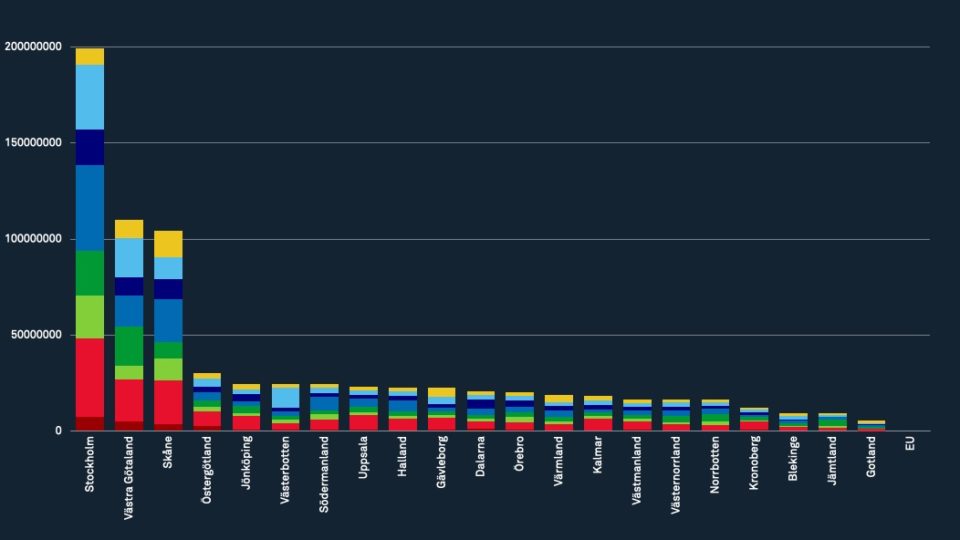
Attack ads
Attack ads have been clearly featured in the parties’ election campaigns. It has mainly been used by the right-wing parties. The parties spent SEK 8,7 million in total on attacking other parties and their politics.
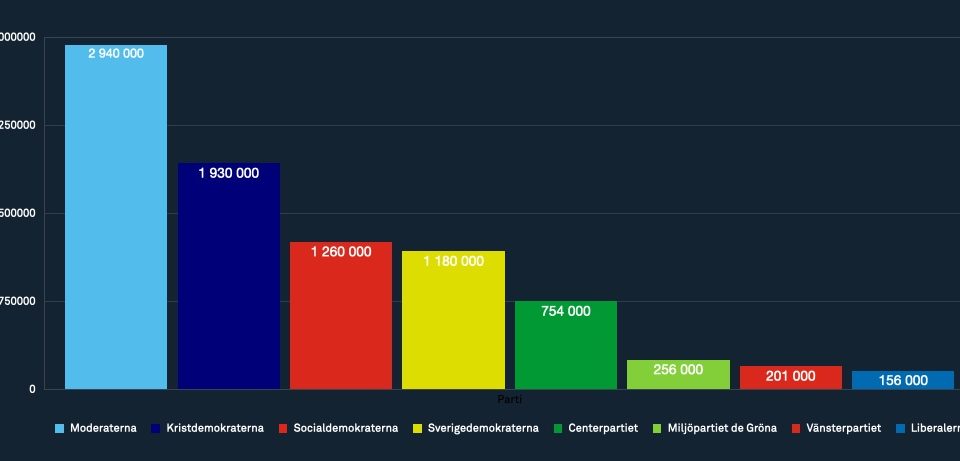
3 conclusions
- The parties clearly had different strategies in social media
By just looking at the data in Meta Ad Library we clearly see the strategies used by the different parties during the election. This includes both who they targeted, as well as what topics they chose to push in their advertising. On top of that we have also been able to see when a party chose to focus on a new hot topic ind their ads, as well as the tonality in the advertising.
- There was a clear final sprint i social media
From the beginning of the year up until the summer there was a slight increase in spend, but once the election came in to August and the final spring, most of the parties increased the intensity in social channels.
- The election was determined by “the wallet-questions”
The topics related to issues that affects the amount of money we have in our wallet by the end of the month is what we can see has determined the outcome of the Swedish election 2022. For example the price increase in energy and fuel.
For Meta ads about social issues, elections or politics, you can view detailed information about the advertisers and their ads. This data is open to everyone, but thanks to Whispr Group Insights Platform, we are able to analyze this data and transform it into actionable insights.
Here you can take part in our political election barometer or have a look at when our expert, Olof Gränström, presented the data on Swedish TV channels TV4 and SVT
Want to know more about the source and how you can use it to your advantage? Please contact us!








